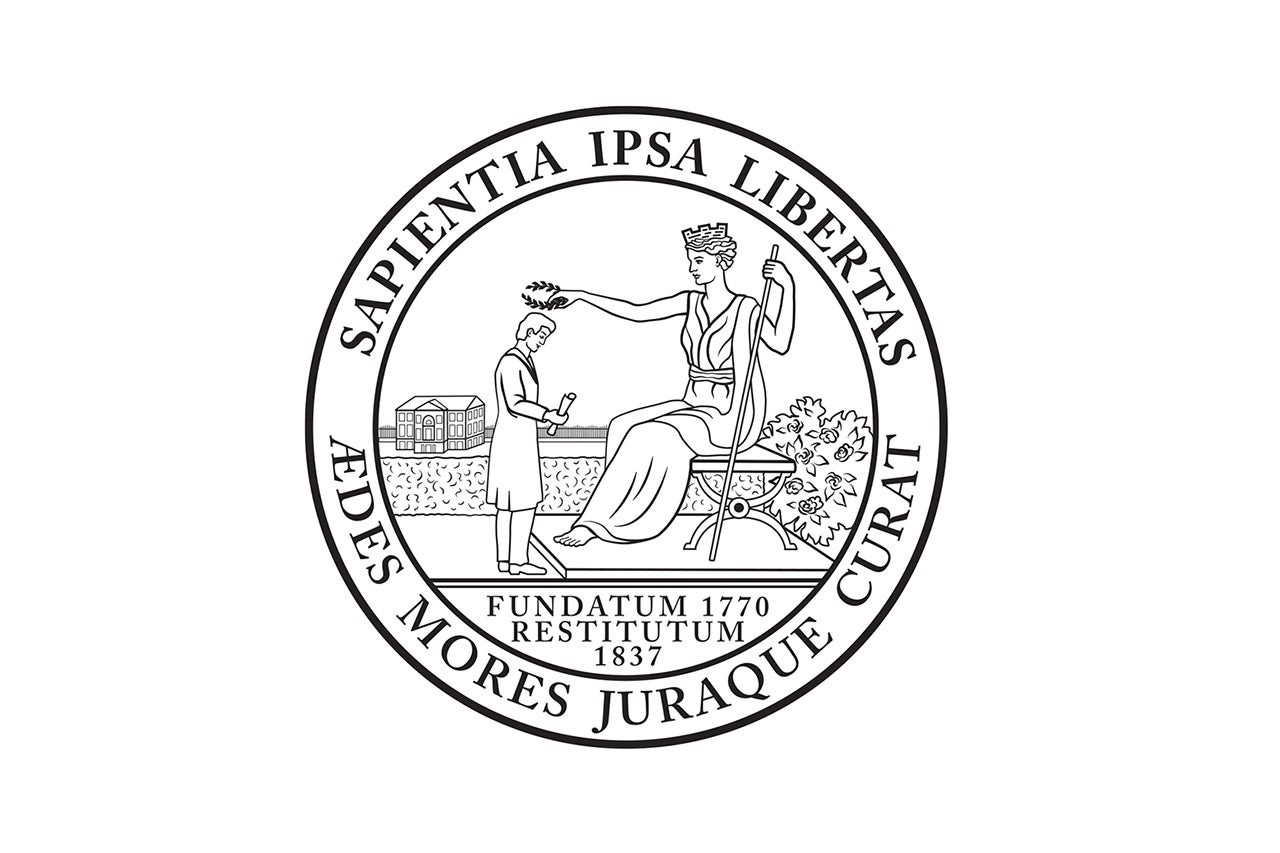Time takes its toll on just about everything. It dulls the once refined edges of youth, wears down the sharp corners of grand buildings and washes away the brilliance of colorful art.
And the College’s seal of 174 years is no different. It, too, softened over time. The College tasked freelance artist Allston McCrady with restoring the rendering to something closer to its original design. But a return to the vivid seal of our earlier days turned into a quest for the origins of the image’s history. The original artist of the College’s seal is unknown and there’s no official decree outlining required elements of the insignia.
“It’s kind of amazing how little is known,” says McCrady.
What is known is this: In 1843, the College of Charleston’s Board of Trustees adopted a plan to create a seal following a request for an official CofC emblem from the Class of 1842. A short time later, a Roman-inspired rendering made its debut.
 McCrady examined four examples of the 19th-century seal housed within the College’s Special Collections, including the actual metal stamp used to impress the seal on college diplomas from the time period. Each image depicts a woman wearing robes and a mural crown sitting on a traditional Roman chair. In one hand, she holds a scepter, while bestowing a wreath upon a graduating student with the other. Randolph Hall of 1828 rises in the background with a fence, bush and wall dividing the space.
McCrady examined four examples of the 19th-century seal housed within the College’s Special Collections, including the actual metal stamp used to impress the seal on college diplomas from the time period. Each image depicts a woman wearing robes and a mural crown sitting on a traditional Roman chair. In one hand, she holds a scepter, while bestowing a wreath upon a graduating student with the other. Randolph Hall of 1828 rises in the background with a fence, bush and wall dividing the space.
Many of those details were lost, McCrady says, sometime in the 1910s or 1920s. The Roman chair disappeared, the three-story Randolph Hall looked more like a one-room schoolhouse and the bush behind the woman turned into an “amorphous blob.”
“When you’re dealing with a historic image, you’ve got to be as true to it as possible or else it will keep being reinterpreted and reinterpreted,” McCrady says. “That isn’t against the law, but it depends on whether you want to be true to what was intended.”
That’s why the Board of Trustees voted last fall to return to an image more closely resembling our intended seal.
After all, it is the traditions and history of those who came before that make the educational journey of the College unique. That’s why we’ve dusted off the dullness of time and returned our seal to its roots.




